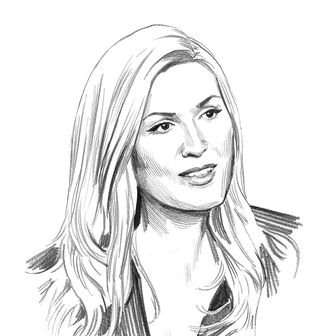On January 21, 2017, the new administration introduced itself to the White House press corps with a surprise briefing in which Sean Spicer yelled for five minutes about how the crowd at Donald Trump’s swearing-in, which had attracted only an estimated 300,000 to 600,000 people the day before, had been the “largest” ever, “period!” That was how it started, and it only got weirder from there. Every presidential administration has a combative relationship with the White House press corps, but during the Trump administration, the tension increased considerably. In four years, the job of press secretary was held by four different people — one of whom gave no formal briefings at all — but no matter who stood at the podium, it was a theater for conflict with the president as the star antagonist. Any event could become the scene of a fight if Trump was in the mood for it, which he often was. Some reporters shrewdly viewed this as an opportunity for brand building and needled the president to elicit made-for-TV moments sure to generate maximum exposure. Jim Acosta, CNN’s chief White House correspondent, gleefully sparred with Trump virtually anytime the two men found themselves in the same room. Once, their interaction was so heated that, as I watched from a chair a few rows away, I was concerned it might escalate into some kind of Wrestlemania-style tussle. The White House responded by falsely accusing Acosta of physically grabbing an intern who tried to take his microphone away and by pulling his “hard pass,” or the badge that grants reporters access to the complex. (Acosta ultimately recovered his badge.)
More often, those reporting from the West Wing were strategizing on how to avoid the battle altogether. “Trump wants people to believe that the reporters in that room are the opposition party. If you are going in there and making the story about you, you are failing and playing right into the White House strategy to undermine the press,” says Jonathan Karl, the chief White House correspondent for ABC News. “The greatest challenge in covering this White House has been to aggressively seek out the truth. But how do you strive to be fair and accurate when you’re covering a president who is calling you a traitor?”
Under ordinary circumstances, a press corps is a team of rivals; however, the chaos of the Trump era, and the president’s predictably unpredictable nature, leveled the playing field for the wider cohort in many ways. The process was essentially more democratic than ever before, since leaks came from everywhere and came to anyone skilled or lucky enough to find them, their status in the news hierarchy often secondary to their ability to actually understand how the place operated. “Correspondents who had been covering the White House for decades suddenly found themselves just as baffled as those who were only days into the beat,” says Kaitlan Collins, a White House correspondent for CNN. As familiar as we all are with Trump’s contempt for the media, only a select few have shared the experience of being in the room or in the Air Force One cabin or of shouting over the helicopter in the Rose Garden to see the circus up close. It creates a bond.
Most of these correspondents have covered the administration since day one and have been on the receiving end of offensive or hostile remarks. Trump’s fuse appeared especially short when he interacted with women, notably women of color. As a reporter, “you never wanted it to be about you,” says veteran White House correspondent April Ryan. But Trump often forced that to happen. Once, he responded to a question from Ryan, who is Black, by asking if the members of the Congressional Black Caucus were “friends” of hers. “He seems to make sure personal attacks when he doesn’t like the issue,” she says. Weijia Jiang, a correspondent for CBS News, agrees. During the pandemic, this became an especially “heavy assignment,” she says, reflecting on several exchanges with the president during coronavirus briefings. “He would also try to create distractions from the grim reality of the situation by hurling insults at us or using inflammatory rhetoric. That’s just noise,” she told me. “I tried my best not to let it drown out my questions because people deserved to know the answers.”
*A version of this article appears in the January 4, 2021, issue of New York Magazine. Subscribe Now!































